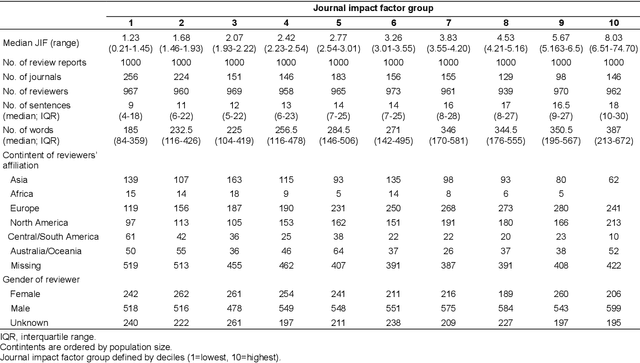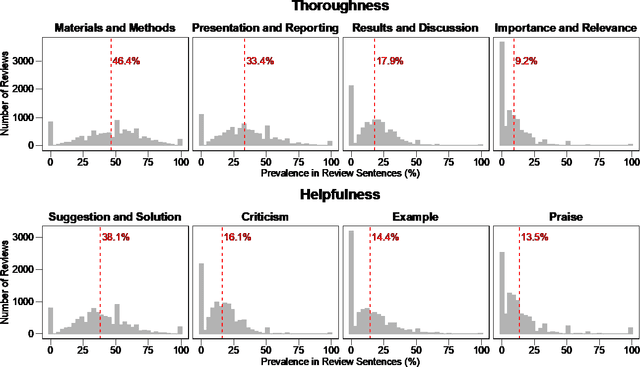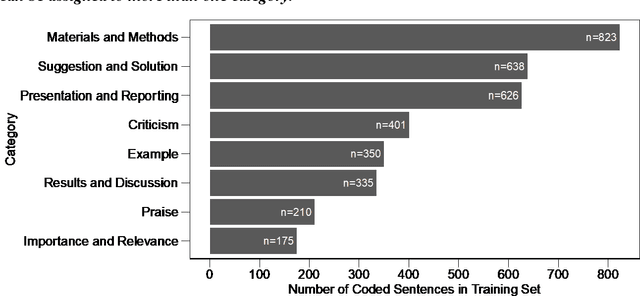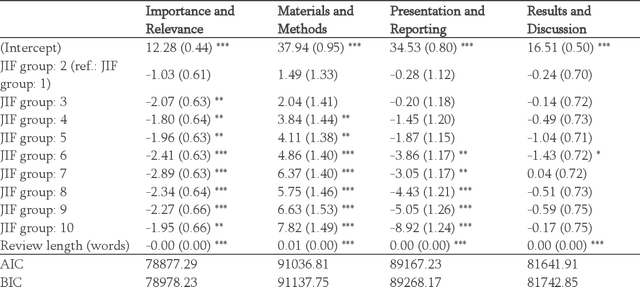Journal Impact Factor and Peer Review Thoroughness and Helpfulness: A Supervised Machine Learning Study
Paper and Code
Jul 23, 2022



The journal impact factor (JIF) is often equated with journal quality and the quality of the peer review of the papers submitted to the journal. We examined the association between the content of peer review and JIF by analysing 10,000 peer review reports submitted to 1,644 medical and life sciences journals. Two researchers hand-coded a random sample of 2,000 sentences. We then trained machine learning models to classify all 187,240 sentences as contributing or not contributing to content categories. We examined the association between ten groups of journals defined by JIF deciles and the content of peer reviews using linear mixed-effects models, adjusting for the length of the review. The JIF ranged from 0.21 to 74.70. The length of peer reviews increased from the lowest (median number of words 185) to the JIF group (387 words). The proportion of sentences allocated to different content categories varied widely, even within JIF groups. For thoroughness, sentences on 'Materials and Methods' were more common in the highest JIF journals than in the lowest JIF group (difference of 7.8 percentage points; 95% CI 4.9 to 10.7%). The trend for 'Presentation and Reporting' went in the opposite direction, with the highest JIF journals giving less emphasis to such content (difference -8.9%; 95% CI -11.3 to -6.5%). For helpfulness, reviews for higher JIF journals devoted less attention to 'Suggestion and Solution' and provided fewer Examples than lower impact factor journals. No, or only small differences were evident for other content categories. In conclusion, peer review in journals with higher JIF tends to be more thorough in discussing the methods used but less helpful in terms of suggesting solutions and providing examples. Differences were modest and variability high, indicating that the JIF is a bad predictor for the quality of peer review of an individual manuscript.
 Add to Chrome
Add to Chrome Add to Firefox
Add to Firefox Add to Edge
Add to Edge